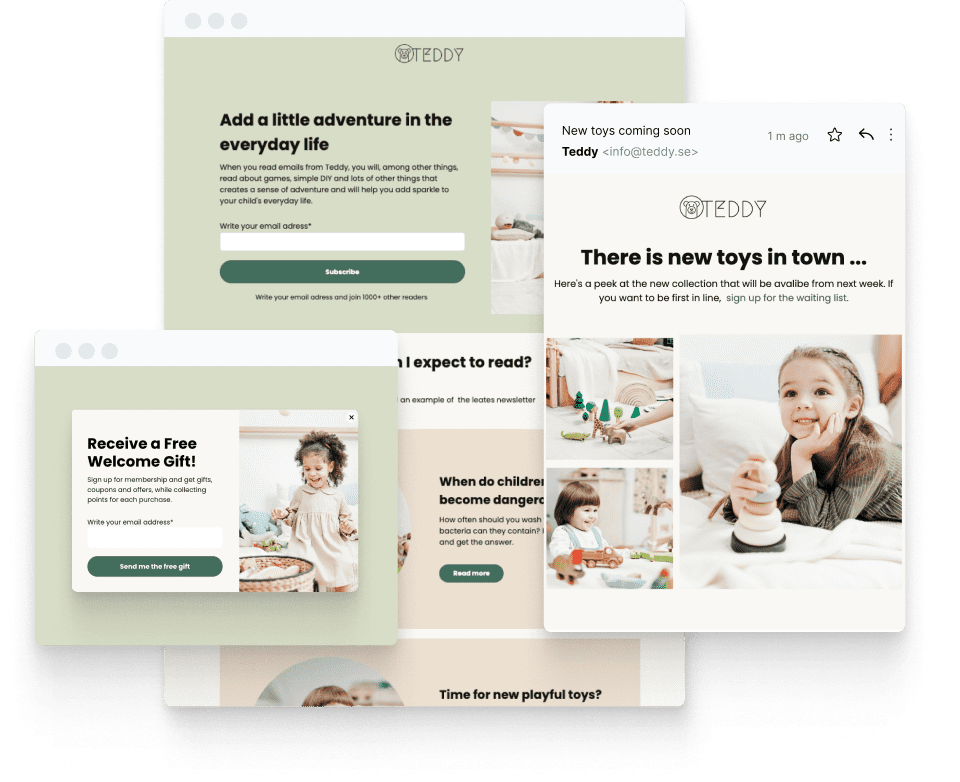We have already covered how to design a good email marketing strategy, how to write great, engaging newsletters, and how to collect subscribers fast, but there is an important part that is missing: how to get people to actually open your newsletters?! All the efforts will go in vain if you don’t actually give people a good reason to open your emails – aka if you don’t have a good subject line. This post will walk you through writing a good subject line for any kind of newsletter in 3 simple steps. And that will make your newsletter open rates fly through the roof (or at least through the Gmail promotions tab).
1. Start with a ‘WHY’
It may seem that I’m repeating this again and again, but you always need to know your ‘WHY’ first – why are you sending this particular newsletter? What do you want to achieve with it? What is your goal?
You need to define it (hopefully you have already done that while designing your email marketing strategy and can refer back to it now) and state it clearly in your subject line:
For example:
I want to sell something to the subscriber (give them an offer)
I want to tell the subscriber about something new (a new product, service, feature, event, etc.)
I want the subscriber to take a particular action NOW (e.g. renew their subscription, accept new terms and conditions)
I want the subscriber to interact with me (e.g. fill in a short survey about a new course/product/service I am offering)
I want to show something interesting to the subscriber
I want to solve a particular problem the subscriber has …
Just as with the bait for subscribing to your newsletters, your subject lines need to be aligned with your goal.
2. Use headline psychology
Hubspot defined these 7 principles of good subject lines and in my mind, these four really hit the nail right on the head when it comes to the psychology of attracting people’s attention and generating interest:
Urgency
Stressing the need for the reader to take quick action in the subject line and appealing to FOMO (Fear of Missing Out) is a fool-proof way of increasing your open (and conversion) rates:
E.g.: ‘Renew your subscription now and get 20% off – offer valid only 3 days!’
‘Grab ‘em before they go – only 5 early-bird tickets left!’
‘The webinar starts TONIGHT at 8 p.m. – last chance to sign-up
Curiosity
Piquicking the recipient’s interest enough to make them open the newsletter to read on – this is a tricky one. There is a fine line between not letting the cat out of the bag in your subject line and making it so vague that the subscriber will decide ‘I don’t know what this is about and move your email straight to the ‘bin’ (or, worse still – the ‘spam’ folder).
E.g.: ‘This habit is really ruining your productivity at work
E.g.: ‘I used to have your problems with sales too’
E.g.: ‘What Amanda did to me yesterday really wasn’t fun…’
Relevance and timeliness
Time is of the essence in marketing – you need to recognize that your subscribers’ needs change depending on a number of factors e.g. the season (Christmas or summer holidays?) or the stage there are at in your business relationship (a newly-subscribed prospect or a returning customer who has been making repeated purchases from your business for months?). Making your subject line timely and relevant is a key to getting your newsletter open:
E.g.: ‘Learn how to design Christmas offer newsletters that sell’
‘This add-on will help you use XYZ 73% better’
Personalization
This means not only addressing the subscriber directly by their name, but also addressing their particular pain point (which you should know, right, because you are segmenting your subscriber’s lists depending on their different needs and interests – or at least you should), and you also speak their language and know what makes them tick (you won’t write the same way to a 50-year old law school professor and to a quirky 25-year old social media marketer, even if you’re trying to sell them the same product).
E.g.: ‘Emilia, this course will finally solve your marketing problem’
3. Use the right language
This means both tailoring your message to your target audience (age, gender, profession, even personality type) and using some universal tricks – proven linguistic life-hacks that increase the interest of readers regardless of their background:
Keep it short and simple
Your headline should not exceed 10 words (and the less, the better).
Use a question
Do you want to increase your open rates by 120%? Tired of ineffective meetings? What is the best time to send Christmas offers?
Use a ‘WH-’ clause:
How to win friends and influence people;
What to do when your XYZ fails
Use numbers:
Save 50% next time you visit XX!
3 easy steps to a safer home for your child
5 ways to optimize your workout
Get started with email marketing
Create beautiful email newsletters for free with Get a Newsletter and reach your subscribers and customers in a heartbeat.

Leave a Reply